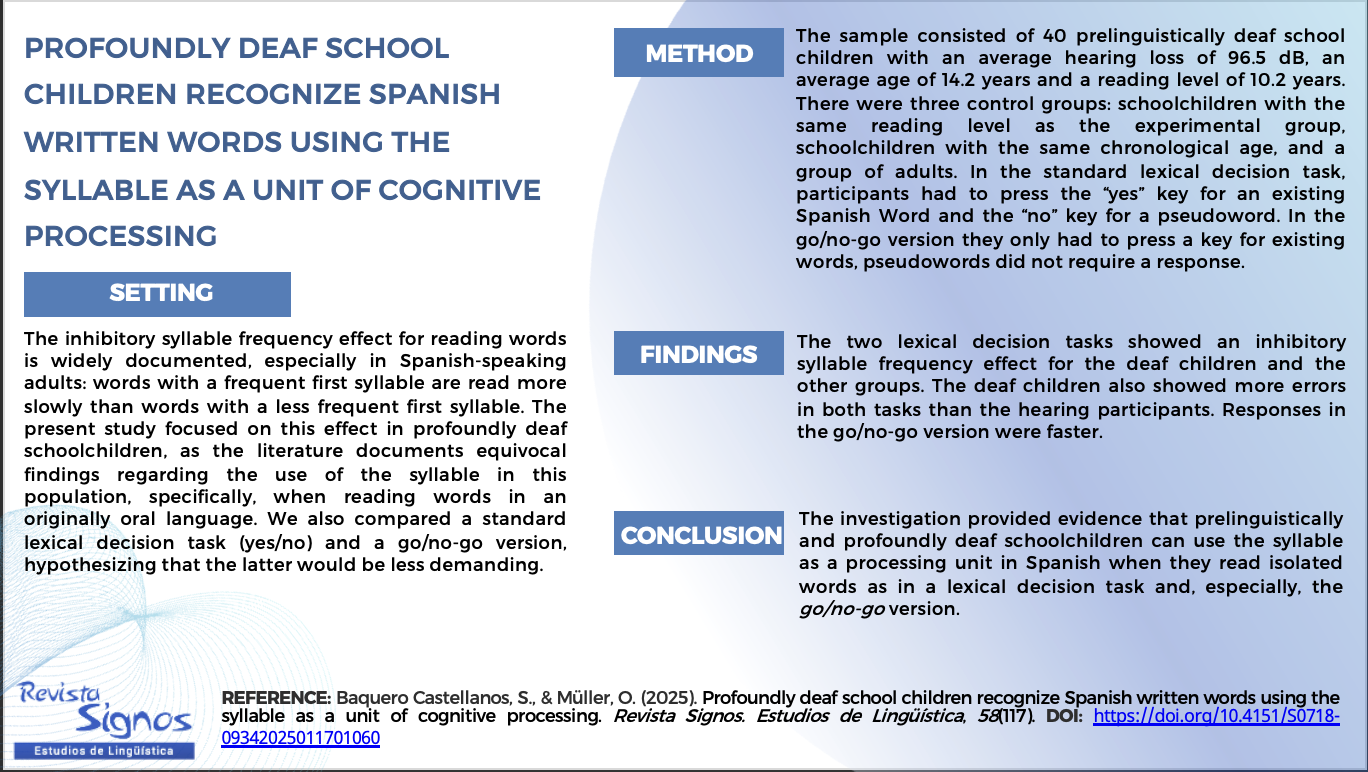Español
DOI:
https://doi.org/10.4151/S0718-09342025011701060Abstract
The syllabic frequency inhibition effect (SFIE) in the reading of Spanish words is widely proven and documented, especially in Spanish-speaking adults. The present study focused on this effect in profoundly deaf schoolchildren. The sample consisted of 32 prelinguistically deaf schoolchildren with an average of 96.5 dB of hearing loss with an average age of 14.2 years (SD: 2.1) and a reading level of 10.2 years (SD: 1.1). There were three control groups: schoolchildren with the same reading level as the experimental group, schoolchildren with the same chronological age as the experimental group, and a group of adults. The results of the two lexical decision experiments (experiment 1: yes/no, experiment 2: go/no-go) showed positive evidence that profoundly deaf schoolchildren use the syllable in written word processing and that the effect was inhibitory. Also, they showed much more errors in the tasks in relation to the hearing participants. The results are discussed regarding syllabic processing and its relationship with orthographic and phonological processing of profoundly deaf people.

Published
How to Cite
Issue
Section
License
Copyright (c) 2025 Revista Signos. Estudios de Lingüística

This work is licensed under a Creative Commons Attribution 4.0 International License.
Copyright agreement:
Authors who have a manuscript accepted for publication in this journal agree to the following terms:
Authors will retain their copyright and grant the journal the right of first publication of their work by means of this copyright agreement document, which is subject to the Creative Commons Acknowledgment License that allows third parties to share the work provided that its author and first publication in this journal are indicated.
Authors may adopt other non-exclusive license agreements for distribution of the published version of the work (e.g., depositing it in an institutional repository or publishing it in a monographic volume) as long as the initial publication in this journal is indicated.
Authors are allowed and encouraged to disseminate their work via the internet (e.g., in institutional publications or on their website) before and during the submission process, which can lead to interesting exchanges and increase citations of the published work (read more here).


